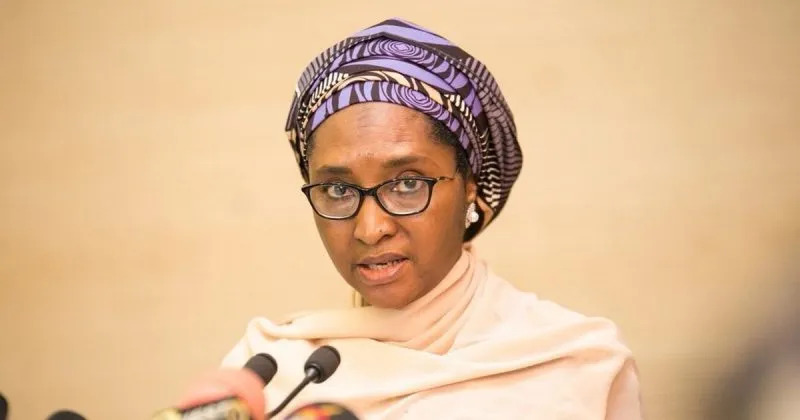Nigeria’s Minister of Finance and National Planning, Zainab Ahmed, has said that the government paid N6.210 trillion to oil marketers as subsidy in eight years.

Ahmed who stated this yesterday, when she appeared before the House of Representatives Ad-hoc Committee on Petroleum Products Subsidy Regime from 2013-date said the payment period was between 2013 to 2021.
She explained that the government was currently paying N283 as subsidy on every litre of PMS imported into the country by the NNPC Limited.
The minister, who reiterated that subsidy on PMS is not sustainable as it is exacting pressure on the finances of the country, expressed hope that the subsidy regime will come to an end soon.
“I am going to address issues as highlighted by the lawmakers in the letters sent to us. Deduction of PMS under recovery shortfall by NNPC for the period 2013 to 2022 we are reporting that there is a total sum of N4.436 trillion, which was deducted as PMS under-recovery by NNPC for the period January 2013 to December 2021. The report shows the amount that was deducted during the period under review.
“Also in the report is the summary of subsidy that has been paid to independent oil marketers from 2013 to 2016 and in this report, we are reporting the sum of N1.774 trillion has been paid to independent oil marketers as PMS subsidy from 2013 to 2016.
“The total sum of N6.210 trillion was expended from PMS under-recovery by NNPC and payment to independent oil marketers from 2013 to 2021.
“On the funding of subsidy payments to independent oil marketers for 2013 to 2016, payments that have been made to them were directly from domestic excess crude account through the deduction of Sovereign Debts Instruments (SDI). They are negotiable short-term instruments that were issued by the government at the time to enable marketers to access financial support from their banks for the importation of PMS.
“The instrument was approved by the then President in 2010. It is also important to note that we have instances where funds are transferred from the consolidated revenue fund to the domestic excess crude account for subsidy payments. In 2015, N31 billion, again the same year N106.1 billion were transferred from the CRF in another instance to the domestic excess crude account.
“In 2016 there was another transfer of N40 billion from the CRF to the same account to settle PMS subsidy to oil marketers.
“There was also the sum of N413.363 billion which was provided through short-term funding by the Central Bank of Nigeria. The details by the President for the approval of this funding are also attached to the document submitted to the committee.
“Concerning the transfer of funds by NNPC and its affiliates to the treasury single account the ministry has obtained evidence as enclosed in annexe 9 of the report. The ministry is also not in the position to provide a statement of account of NNPC and its affiliates. The parliament should ask for this directly from them.”
Ahmed added that “fuel subsidy is the difference between the pump price which is now fixed at N165 and the landing cost which we are projecting at an average of N448 per litre in 2023, even now the cost is around that.
“So, the PMS subsidy we are carrying today in the nation is around N283 per litre, that is what we are carrying, so it is the difference between the pump price and the landing cost of petroleum products in the country.”
However, the panel chairman, Ibrahim Aliyu, expressed concerns over some of the figures given by the minister, saying the Finance ministry ought to have done more due diligence.
Aliyu said “you see, if you look at the average daily truck-out quantity latest, 64,964,400, in 2012 there was a report and the total consumption was put at 31,500, so it’s very difficult to imagine how you can have a near 100 per cent increment in consumption within 10 years.
“And then going by the permutations or calculations, Minister, if you are using a 42,000 litres capacity truck, if you divide it by the 64,964,400 litres you arrive at 1,547 trucks daily. And if you take an average, simple division by 37 (States) including Abuja, you have 41 trucks of 42,000 litres capacity giving to those states, maybe my state being a smaller state in terms of consumption may be requiring less maybe 10 trucks.
“So, what I am saying in essence Minister, we are talking of daily consumption, Monday through Sunday and Monday again, no public holidays, in fact during COVID-19 when there was lockdown, limited movement the consumption rate remained the same. So, I wondered how the Ministry can accept this kind of figure. You see it’s difficult.
Meanwhile, Chief Executive Officer(CEO) Centre for the Promotion of Private Enterprise [CPPE] Mr Muda Yusuf, has warned that if the staggering N18 billion per day fuel subsidy persists, Nigeria may for the first time be unable to fund capital projects in 2023. He said the Government must come up with creative ways to exit fuel subsidy, saying the model was unsustainable.
Yusuf said Nigeria is in a difficult time, warning that if left unchecked, the figures will cripple the already fragile economy.

Submit press release, news tips to us: tips@odunews.com | Follow us @ODUNewsNG
